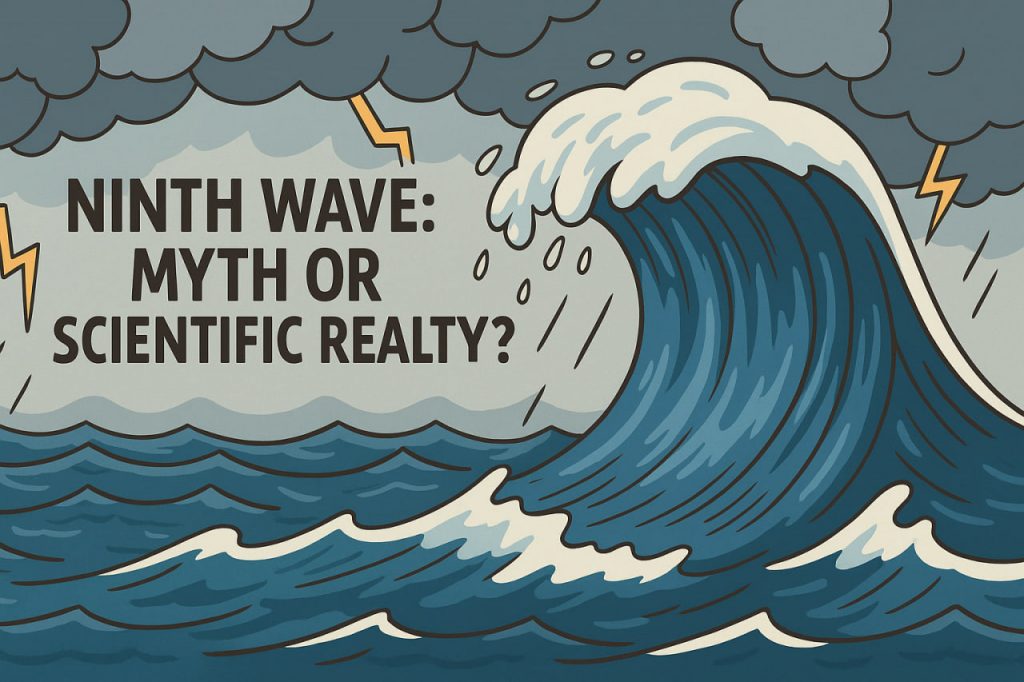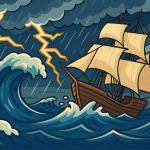The idea of the ninth wave is deeply rooted in maritime folklore, often described as the largest and most dangerous wave in a series of ocean swells. Sailors traditionally believed that waves came in sets, with the ninth one being the most powerful — capable of capsizing ships or sweeping sailors off deck. But is there any scientific evidence behind this belief, or is it simply a nautical myth passed down through generations?
Origins in Maritime Culture
The concept of the ninth wave likely comes from centuries of oral storytelling among seafarers. In times before meteorological science, sailors relied on experience, instinct, and superstition. In literature and art — such as Ivan Aivazovsky’s famous painting “The Ninth Wave” — the wave is portrayed as a terrifying but symbolic force of nature, often associated with near-death experiences and survival.
Do Waves Come in Sets?
In reality, ocean waves often travel in wave groups, or sets, caused by interference between different wind patterns. Surfers and sailors recognize this pattern, where several smaller waves are followed by one or two larger ones. However, there is no universal rule that every ninth wave is the largest. Wave frequency and height depend on many factors, including wind strength, storm distance, and ocean currents.
Rogue Waves: Fact Behind the Legend?
Some scientists believe the myth of the ninth wave may be linked to the phenomenon of rogue waves — unusually large, unpredictable waves that can appear suddenly in open water. These waves can be more than twice the size of surrounding waves and are confirmed by satellite and buoy data. Rogue waves were once considered legends, but are now recognized as a real maritime hazard.
Modern Oceanography and Wave Study
Advanced technologies such as buoy networks, radar, and satellites now allow scientists to monitor wave behavior in detail. Models show that nonlinear wave interactions can sometimes lead to a single giant wave forming in a group — but the timing is random and not limited to the ninth position.
Symbol or Science?
While the ninth wave makes for a powerful symbol in sea stories and paintings, there is no consistent evidence that it always occurs, or that it’s specifically the ninth wave that’s the largest. It remains a poetic metaphor rather than a proven oceanographic fact — though the real danger of unpredictable waves is well documented.
Glossary
- Ninth wave – a legendary wave believed to be the largest in a series of swells
- Nautical myth – a traditional belief or story passed through generations of sailors
- Wave groups – clusters of waves traveling together, formed by overlapping patterns
- Interference – the combination of different wave systems that can enhance or reduce wave height
- Rogue wave – an unexpectedly large wave that appears without warning
- Nonlinear interactions – complex processes where wave energy concentrates to form a single large wave
- Ocean currents – large-scale water movements that influence wave patterns


